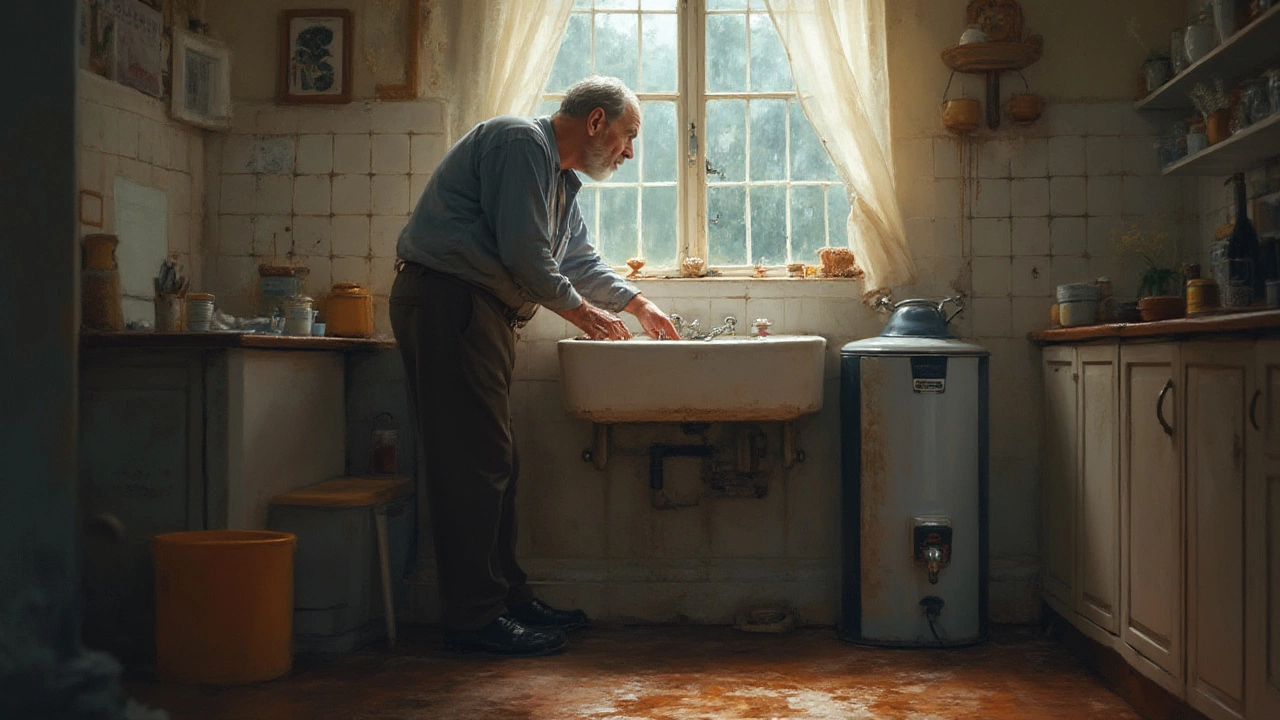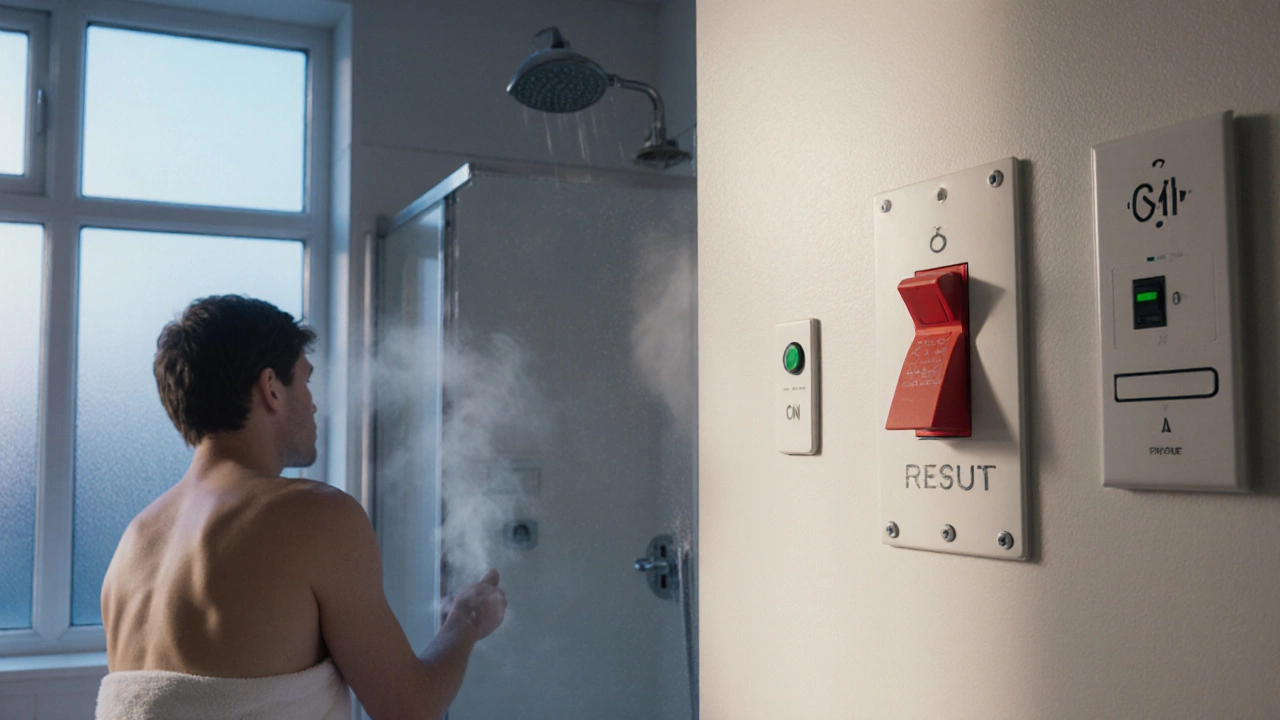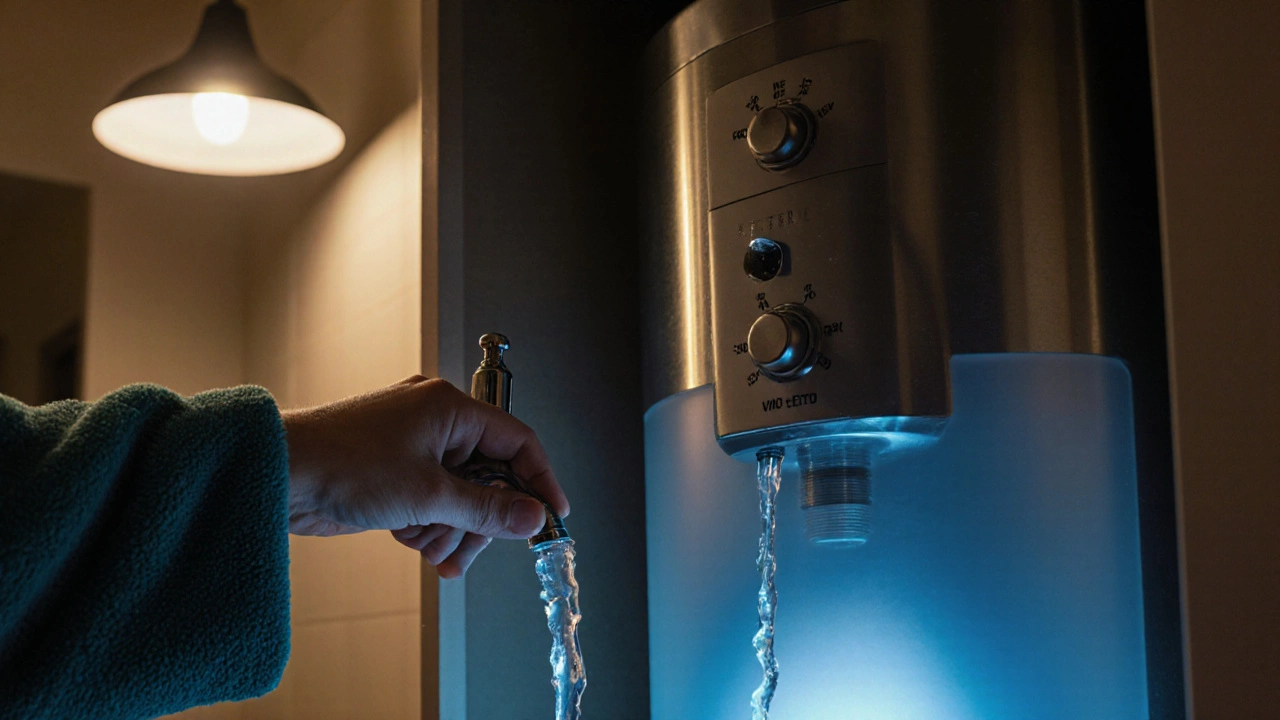
- 20 Oct 2025
- Gideon Thornton
- 0
Anode Rod Inspection Calculator
Based on the article's recommendation to check your anode rod every 12-18 months, this tool helps determine your optimal inspection schedule based on water conditions and usage patterns.
Recommended Schedule
Ever wonder why your shower suddenly turns icy or why you hear strange noises coming from the tank? The most common cause of water heater failure isn’t a mysterious curse - it’s usually something you can spot, diagnose, and often prevent yourself.
TL;DR - Quick Takeaways
- Faulty thermostat or heating element tops the list of failures.
- Corrosion, sediment, and a worn‑out anode rod are close seconds.
- Regular flushing and a yearly anode check can add 5‑10 years to your heater’s life.
What Exactly Is a Water Heater?
Water heater is a domestic appliance that stores and heats water for household use. It typically consists of a metal tank, a heat source (gas flame or electric coil), and control components that regulate temperature. When any of these parts fail, you lose hot water, face higher energy bills, or risk dangerous leaks.
Top 7 Culprits Behind Water Heater Failure
-
Thermostat is a device that measures water temperature and signals the heater to turn on or off. A stuck or inaccurate thermostat can cause the water to overheat, triggering the safety valve, or keep the water lukewarm.
-
Heating element (electric) or gas valve (gas) provides the actual heat that raises water temperature. Burned‑out elements or a failing gas valve stop heat production altogether.
-
Anode rod is a sacrificial metal rod that attracts corrosive particles, protecting the tank interior. When it’s fully corroded, the tank itself starts to rust from the inside.
-
Pressure relief valve is a safety valve that releases excess pressure to prevent tank rupture. If it sticks open, you’ll see constant water leaks; if it fails to open, pressure builds and can cause an explosion.
-
Sediment buildup is a layer of mineral deposits that settles at the bottom of the tank. It insulates the heating element, forcing it to work harder and eventually burn out.
-
Dip tube is a plastic pipe that delivers cold water to the bottom of the tank. Cracks or blockages cause lukewarm water at the tap.
-
Corrosion is the gradual degradation of the tank’s metal due to chemical reactions. Once the steel thins, leaks become inevitable.
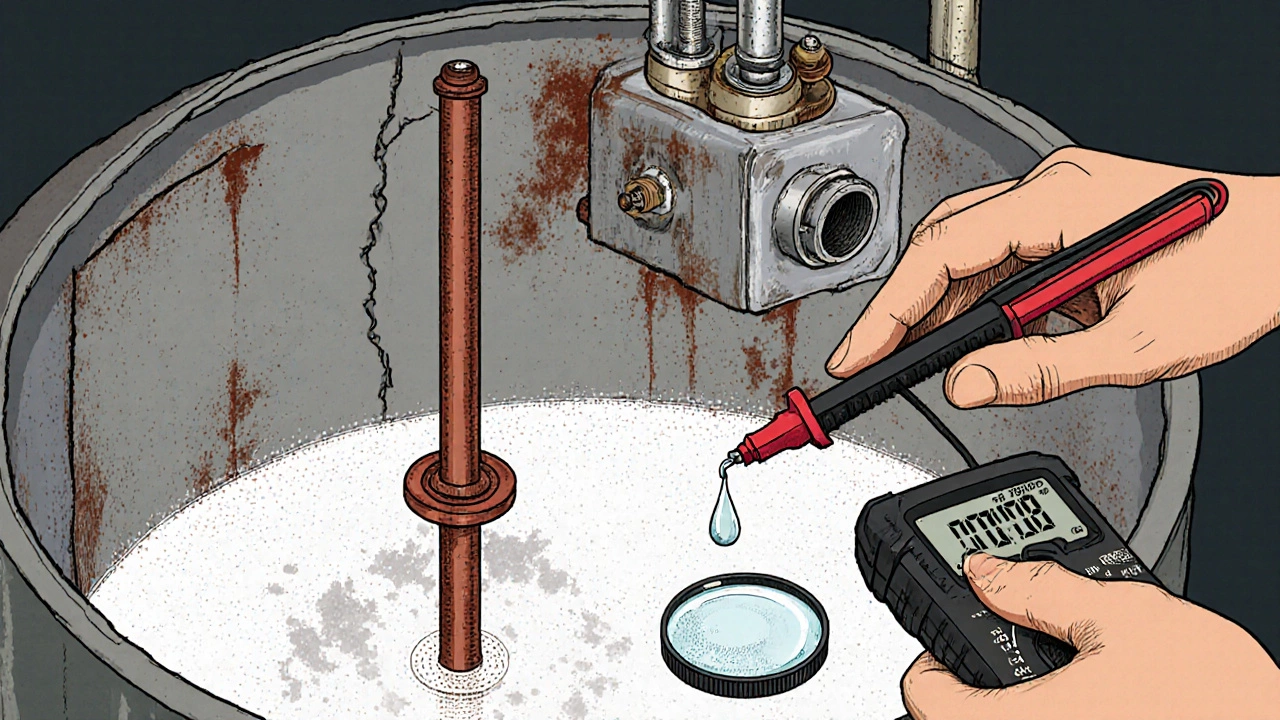
Diagnosing the Problem - Step‑by‑Step
Before you call a plumber, run through these simple checks. They’ll help you pinpoint the faulty component and decide whether a DIY fix is safe.
- Turn off power (electric) or gas supply (gas). Safety first.
- Check the water temperature. If it’s over 120 °F (49 °C) you likely have a thermostat or control issue.
- Listen for popping or hissing noises - a sign of sediment‑induced overheating.
- Inspect the pressure relief valve for drips; test it by lifting the lever (water should flow out and stop when released).
- Look inside the tank (if you’re comfortable removing the access panel). Black, mushy metal means corrosion; white crust means sediment.
- Feel the hot water outlet. Cold water at the tap suggests a dip‑tube problem.
- If the tank makes a buzzing sound but no hot water comes out, the heating element is probably burned out.
Preventive Maintenance - Keep Your Heater Running Longer
Regular upkeep can stop most failures before they happen. Here’s a simple yearly routine:
- Flush the tank. Connect a garden hose to the drain valve and let cold water run until it’s clear. This removes sediment.
- Inspect the anode rod. Unscrew the rod, look for a shiny metallic core. If it’s more than 50 % corroded, replace it.
- Test the thermostat. Use a multimeter to check continuity at the set temperature. Replace if readings are off.
- Check the pressure relief valve. Lift the lever; if water doesn’t flow, swap it out.
- Examine the dip tube. Pull it out gently; if it’s cracked or brittle, install a new one.
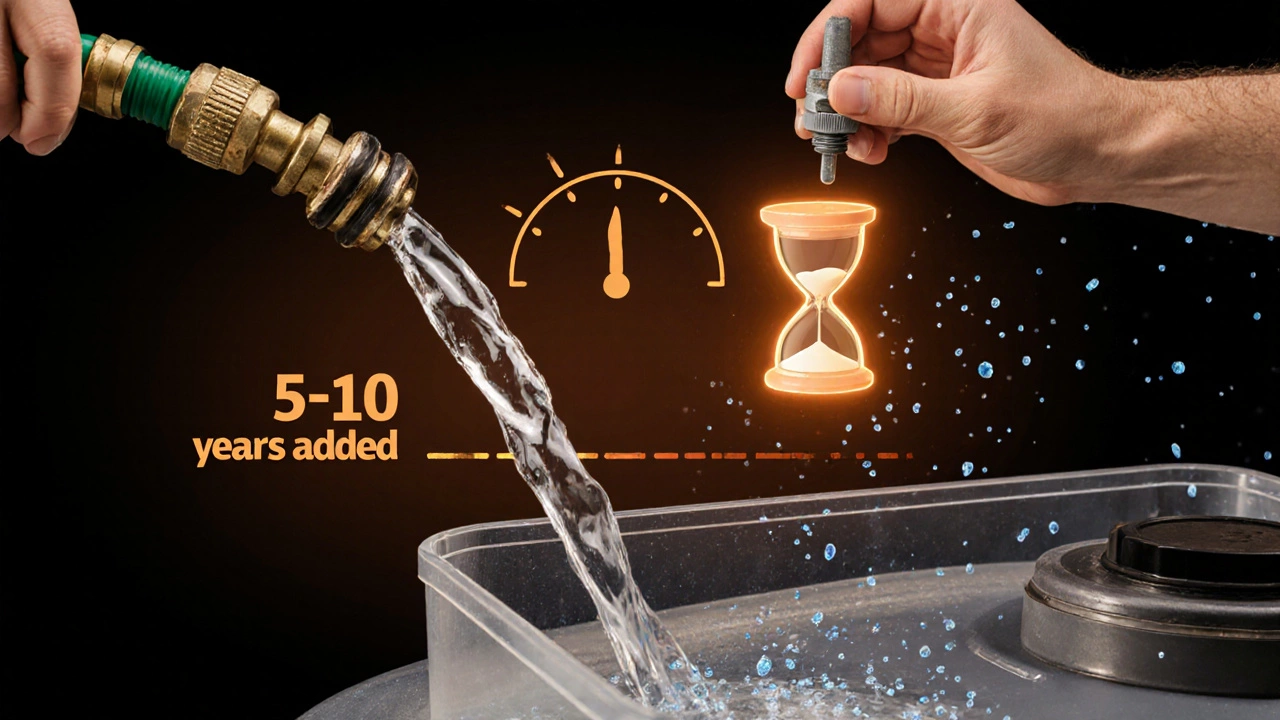
When to Call a Professional
Some issues are beyond a DIY fix, especially when dealing with gas or high‑pressure components. Call a licensed plumber if you notice any of the following:
- Gas smell or a clicking gas valve - potential leak.
- Continuous water pooling around the base - tank may be rupturing.
- Repeated thermostat failures - could indicate a larger control board problem.
- You’re uncomfortable working with electricity or gas connections.
Professional technicians can safely replace heating elements, re‑wire controls, or recommend a full tank replacement if corrosion is extensive.
Quick Checklist - Spotting Common Failure Signs
| Symptom | Likely Cause | Immediate Action |
|---|---|---|
| No hot water | Burned heating element or gas valve failure | Turn off power/gas, test element or valve, call pro if unsure |
| Water cooler than expected | Thermostat set too low or faulty | Adjust thermostat, test with multimeter |
| Strange noises (popping, rumbling) | Sediment buildup | Flush tank immediately |
| Leaks at the base | Corroded tank or loose pressure relief valve | Turn off water supply, inspect valve, consider tank replacement |
| Water pooling near the relief valve | Stuck open pressure relief valve | Replace the valve |
Final Thoughts
Understanding the most common cause of water heater failure empowers you to catch problems early, save on repair costs, and keep your showers steaming hot. Remember: thermostat and heating element issues top the list, but a simple annual flush and anode check can stave off many of the others.
Why does my water heater make popping noises?
Popping usually means mineral sediment has built up at the bottom of the tank. When the heating element heats the water, the sediment expands and creates the noise. Flushing the tank removes the buildup and eliminates the sound.
How often should I replace the anode rod?
Most manufacturers recommend checking the anode rod every 12‑18 months. If it’s more than half consumed, replace it. In hard‑water areas you may need to swap it annually.
Can I replace a heating element myself?
Yes, for electric heaters you can disconnect power, drain the tank, remove the old element with a wrench, and install a new one. Just make sure the replacement matches the voltage and wattage rating of the original.
What temperature should I set my thermostat to?
A safe, energy‑efficient setting is 120 °F (49 °C). It’s hot enough for most uses while reducing the risk of scalding and limiting mineral buildup.
My water heater leaks from the top - what’s wrong?
A leak at the top often points to a faulty temperature & pressure relief valve or a loose fitting. Tighten the valve; if water still drips, replace the valve.



